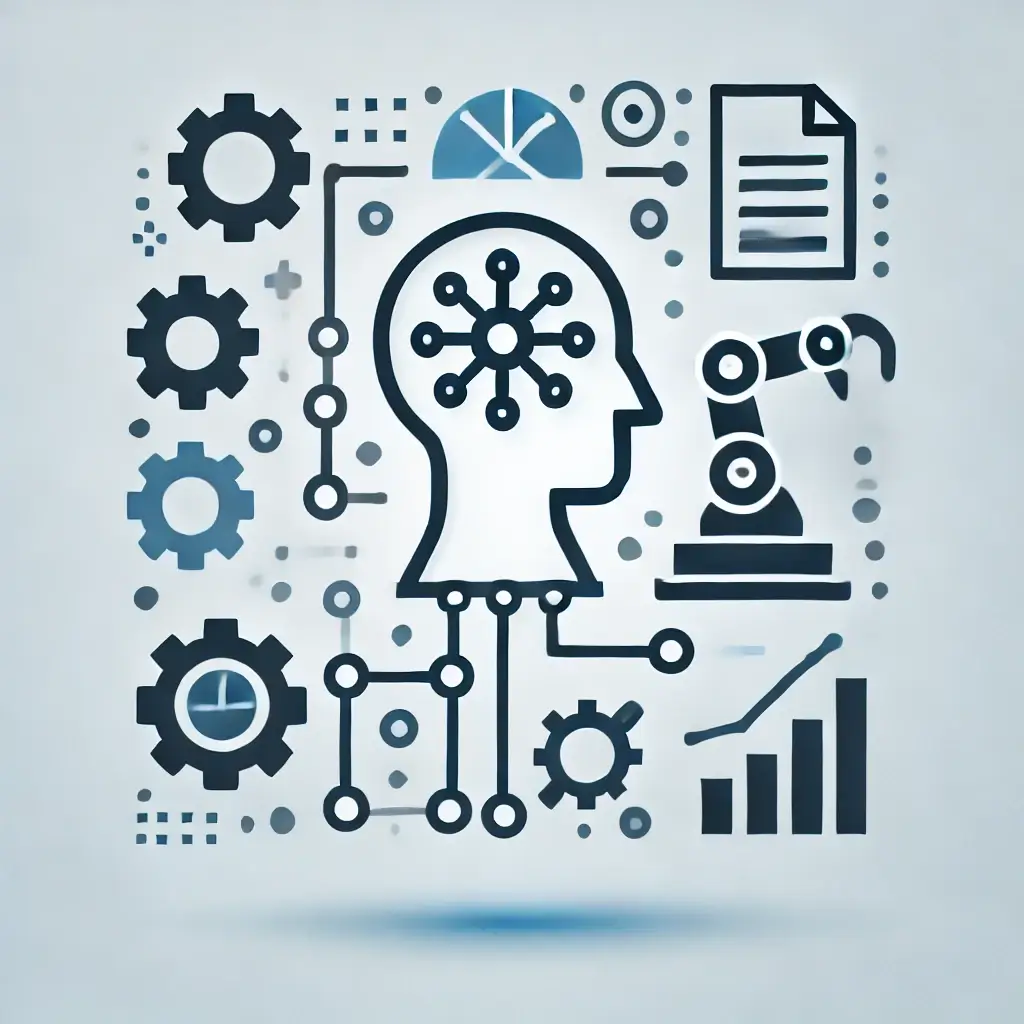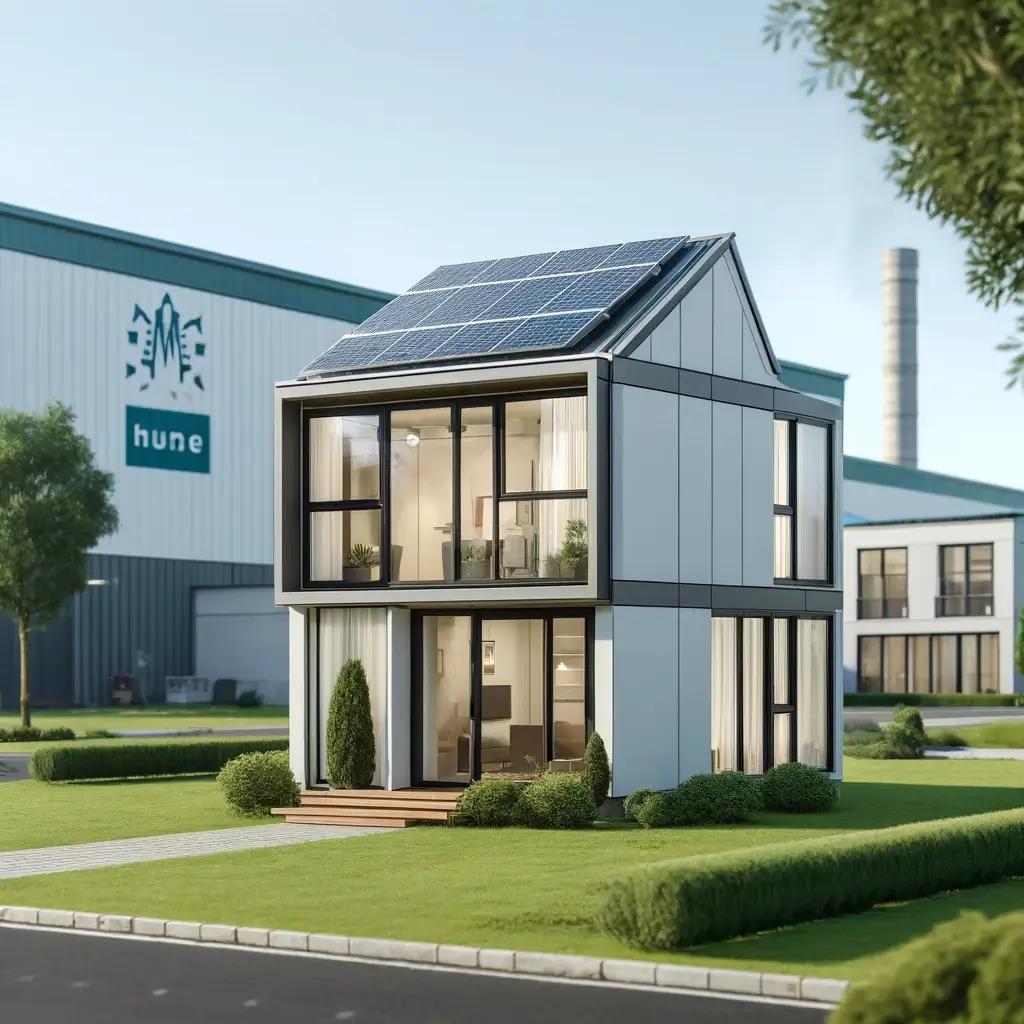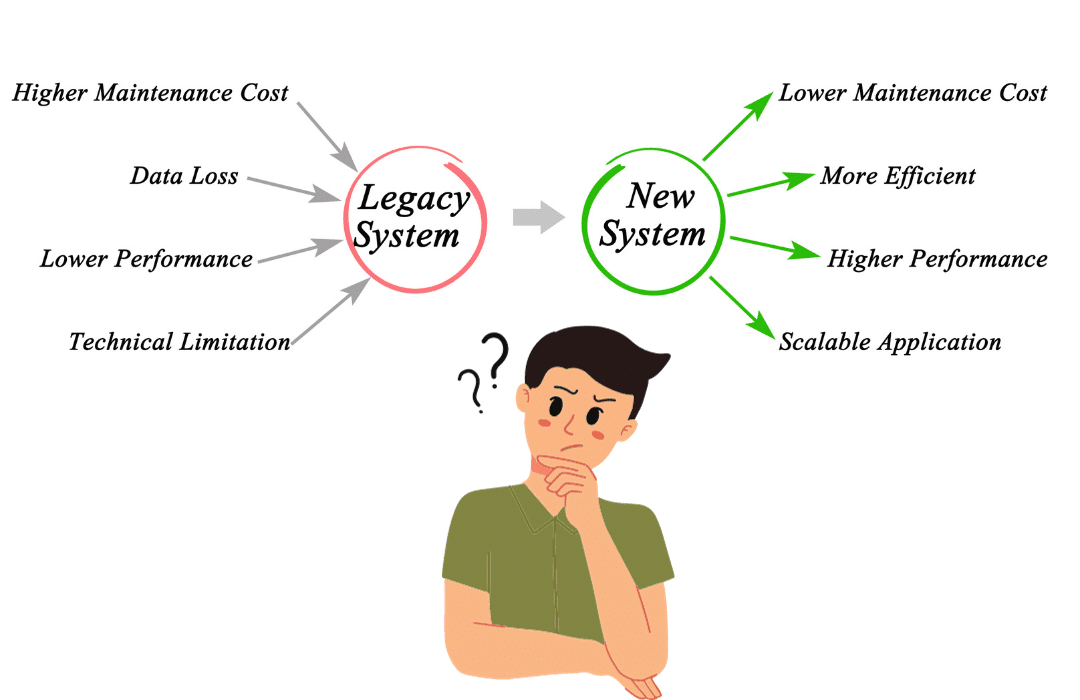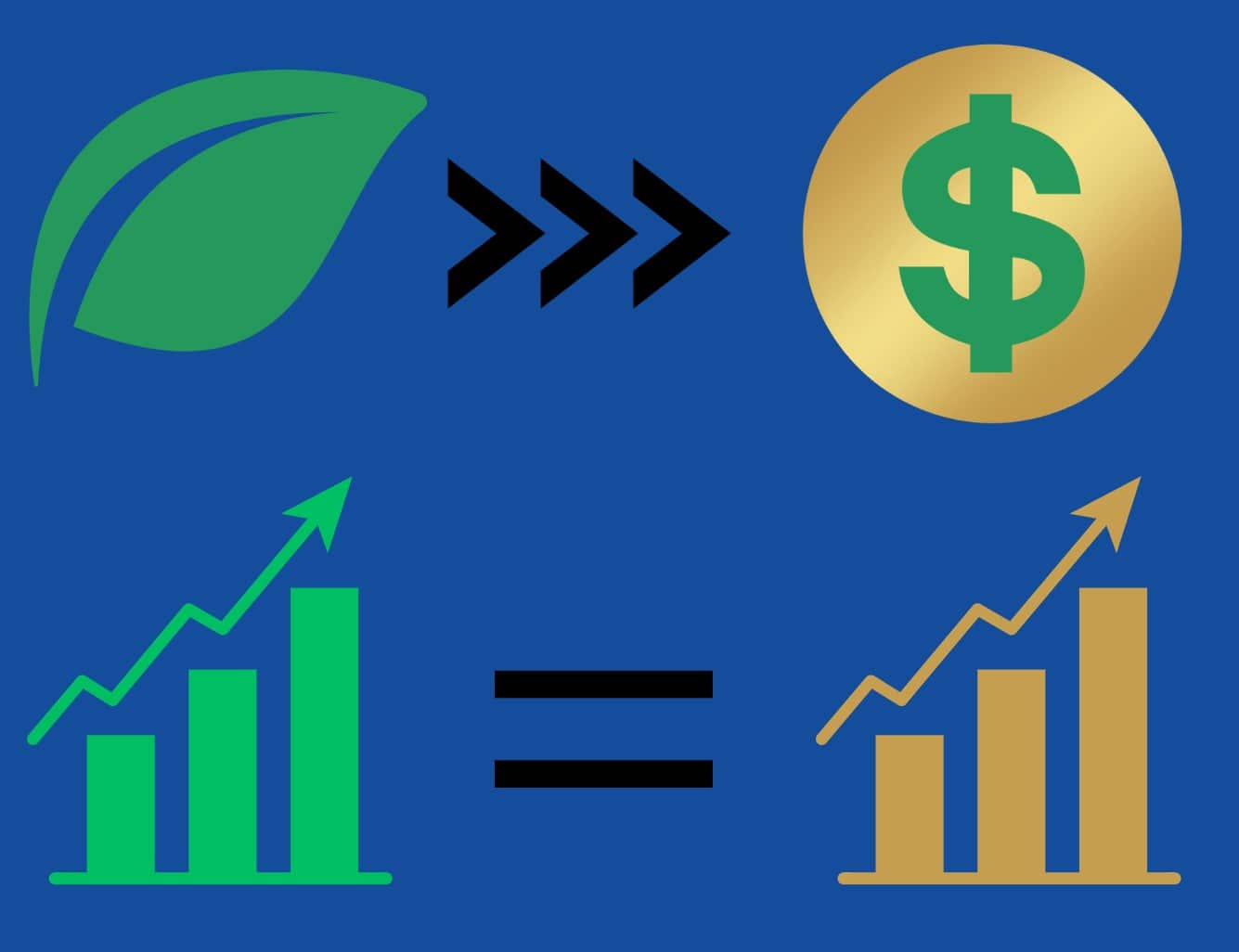As we enter the era of Industry 5.0, the next phase in the evolution of manufacturing and industrial processes, the focus has shifted towards human-machine collaboration, enabling more efficient, flexible, and personalized production systems.
This new paradigm goes beyond Industry 4.0’s emphasis on automation and digitalization, harnessing the power of advanced technologies such as artificial intelligence (AI), the Internet of Things (IoT), and digital twins to create a harmonious synergy between human creativity and the precision of machines.
In this context, the importance of sustainability and the circular economy has never been greater. Industries worldwide are facing mounting environmental challenges, including resource depletion, pollution, and waste generation.
Industry 5.0 presents an opportunity to tackle these challenges head-on, driving a shift towards more responsible and sustainable practices that can minimize negative impacts on the planet while maximizing resource efficiency and value creation.
This article will explore the critical intersection of sustainability, circular economy principles, and Industry 5.0. We will begin by discussing the need for sustainability in the context of Industry 5.0 and introducing the concept of the circular economy.
Next, we will delve into the technologies driving sustainable and circular practices in Industry 5.0, followed by real-world use cases and success stories.
We will then examine the challenges and barriers to adopting these practices, before concluding with a look at future opportunities and the potential for even greater environmental benefits.
By understanding the connections between these concepts, we can work towards a more sustainable, circular, and regenerative industrial future.
The Need for Sustainability in Industry 5.0
In today’s rapidly evolving industrial landscape, businesses face numerous environmental challenges that can no longer be ignored.
Among these challenges are resource depletion, pollution, and waste generation, which pose significant threats not only to the environment but also to the long-term viability of industries themselves. As the world’s population continues to grow and demand for goods and services increases, these challenges are becoming increasingly urgent.
Resource depletion is a pressing concern as finite natural resources, such as minerals, water, and fossil fuels, are being consumed at an unsustainable rate. This overconsumption results in environmental degradation, habitat loss, and even resource scarcity, which can lead to increased competition and geopolitical tensions.
Pollution is another critical issue, with industries generating vast amounts of air, water, and soil pollution, contributing to climate change, public health problems, and the destruction of ecosystems. Furthermore, industrial processes generate vast amounts of waste, much of which ends up in landfills or incinerated, leading to additional pollution, greenhouse gas emissions, and the squandering of valuable materials.
Industry 5.0 has the potential to significantly contribute to tackling these environmental challenges through a combination of technological advancements and a shift in mindset. By embracing improved resource efficiency, waste reduction, and sustainable practices, Industry 5.0 can drive the transformation of industrial processes in a way that minimizes environmental impact while maintaining productivity and competitiveness.
One of the key aspects of Industry 5.0 is the integration of advanced technologies such as AI, IoT, and digital twins. These technologies can help businesses monitor resource consumption, optimize production processes, and reduce waste throughout the product lifecycle. For example, AI-driven predictive maintenance can minimize resource waste by identifying potential equipment failures before they occur, while IoT sensors can track energy and water usage in real-time, enabling more efficient management of these resources.
Moreover, Industry 5.0 emphasizes the importance of human-machine collaboration, which can lead to innovative solutions for sustainable production. By combining human creativity and problem-solving skills with the precision and efficiency of machines, businesses can develop new processes and products that minimize waste, reduce energy consumption, and decrease environmental impact.
In summary, the need for sustainability in Industry 5.0 is paramount. By embracing technological advancements and a focus on human-machine collaboration, Industry 5.0 can help address the environmental challenges of resource depletion, pollution, and waste generation, paving the way for a more sustainable industrial future.
The Circular Economy Concept
The circular economy is an alternative economic model that aims to decouple economic growth from the consumption of finite resources. In contrast to the traditional linear economy based on a “take-make-waste” approach, the circular economy focuses on creating closed-loop systems, where resources are kept in use for as long as possible, and waste generation is minimized through recycling, remanufacturing, and repurposing. The key principles of the circular economy are:
- Design out waste and pollution: Create products and processes that minimize waste generation and pollution from the outset, rather than addressing them as an afterthought.
- Keep products and materials in use: Extend the life of products, components, and materials through strategies like repair, refurbishment, and remanufacturing, promoting a longer and more efficient lifecycle.
- Regenerate natural systems: Implement practices that restore and replenish natural resources, supporting the long-term health of ecosystems and the environment.
Applying circular economy principles in Industry 5.0 can lead to a more sustainable and regenerative industrial model, reducing the negative impacts of production while maximizing resource efficiency and value creation. Some ways that Industry 5.0 can facilitate the adoption of circular economy principles include:
- Digitalization and Data Analytics: The integration of IoT, AI, and data analytics in Industry 5.0 allows for better tracking and monitoring of resource flows, enabling real-time adjustments to minimize waste and optimize resource use throughout the production process.
- Product Lifecycle Management: Industry 5.0 technologies can enhance product lifecycle management by facilitating predictive maintenance.
Technologies Driving Sustainability and Circular Economy in Industry 5.0
The implementation of Industry 5.0 technologies plays a crucial role in driving sustainability and circular economy practices in the industrial sector. These advanced technologies, including the Internet of Things (IoT), artificial intelligence (AI), machine learning, digital twins, and 3D printing, have the potential to revolutionize resource management, waste reduction, and energy efficiency.
a) IoT, AI, and Machine Learning
The integration of IoT, AI, and machine learning in Industry 5.0 enables more efficient resource tracking, data analysis, and process optimization. IoT sensors can be deployed throughout production facilities to monitor resource consumption, waste generation, and energy use in real time. This data can be analyzed using AI and machine learning algorithms to identify patterns, trends, and inefficiencies that can be addressed to improve overall sustainability.
For example, AI-driven predictive maintenance can help extend the life of machinery and equipment, reducing resource waste and minimizing downtime. Machine learning algorithms can optimize production schedules, minimizing energy consumption and reducing the environmental footprint of manufacturing processes.
b) Digital Twins
Digital twins are virtual representations of physical assets, systems, or processes that are used to model, simulate, and optimize their real-world counterparts. By creating digital twins of production facilities and processes, businesses can model and optimize resource flows, waste reduction, and energy efficiency, facilitating more sustainable and circular production practices.
Digital twins enable businesses to experiment with different scenarios and configurations in a virtual environment, without the need for physical adjustments or disruptions to ongoing operations. This can lead to more informed decision-making and reduced trial-and-error costs. For example, businesses can test various production layouts, resource allocation strategies, and waste management techniques to find the most efficient and environmentally friendly solutions.
In addition, digital twins can be used to monitor and manage the entire lifecycle of a product or system. They can track the usage of materials, components, and energy throughout the production process, and even extend to end-of-life management, such as recycling or repurposing. This holistic approach allows businesses to identify opportunities for waste reduction, resource efficiency, and closed-loop systems that support circular economy principles.
Furthermore, digital twins can help businesses better understand the environmental impact of their operations by providing real-time data on emissions, energy consumption, and waste generation. This valuable insight can be used to develop targeted sustainability strategies and track progress toward environmental goals.
In summary, digital twins play a crucial role in driving sustainability and circular economy practices within Industry 5.0. By creating virtual representations of production facilities and processes, businesses can model, simulate, and optimize resource flows, waste reduction, and energy efficiency, ultimately leading to more sustainable and regenerative industrial practices.
c) 3D Printing and Additive Manufacturing
3D printing and additive manufacturing technologies have the potential to significantly contribute to sustainability and circular economy practices within Industry 5.0. By building objects layer-by-layer, these technologies enable the creation of complex geometries and customized products with minimal material waste compared to traditional subtractive manufacturing methods.
Additionally, 3D printing allows for more localized production, reducing the need for long-distance transportation of goods, and subsequently, lowering associated carbon emissions. This on-demand manufacturing approach can also reduce the need for large inventories, further minimizing resource waste and the environmental footprint.
Moreover, 3D printing and additive manufacturing can facilitate the creation of products that are designed for disassembly, repair, and recycling, supporting the circular economy principle of keeping products and materials in use for longer periods. By enabling more efficient production, waste reduction, and localized manufacturing, these technologies play an essential role in driving sustainability and circular economy practices in Industry 5.0.
Industry 5.0 Use Cases and Success Stories
There are several examples of companies and industries that have successfully implemented sustainability and circular economy practices in Industry 5.0. These real-world cases demonstrate the potential of embracing advanced technologies and innovative strategies to improve environmental performance, cost savings, and customer satisfaction.
Philips Lighting (Signify)
Philips Lighting, now known as Signify, has adopted circular economy principles in its lighting products by designing them for longevity, easy maintenance, and eventual recycling. They have implemented IoT and connected lighting technologies to optimize energy use and reduce environmental impact. Signify’s “Circular Lighting” program offers customers a pay-per-lux model, where the company retains ownership of the lighting fixtures and provides maintenance and upgrades as needed. This approach ensures that materials are kept in use for as long as possible and reduces waste by promoting refurbishment and recycling.
BMW Group
BMW has embraced Industry 5.0 technologies and circular economy principles to improve the sustainability of its automotive manufacturing processes. They have implemented AI-driven predictive maintenance, digital twins, and IoT technologies to optimize production processes, minimize waste, and increase energy efficiency. BMW has also focused on material recycling and reuse, aiming to create a closed-loop system for aluminum and steel. As a result, the company has achieved significant cost savings, reduced its environmental footprint, and enhanced customer satisfaction through greener vehicle offerings.
Adidas
Adidas has been leveraging Industry 5.0 technologies and circular economy principles to revolutionize its footwear production and promote sustainability. The company introduced the Futurecraf.Loop. This shoe is a fully recyclable running shoe made from a single material, thermoplastic polyurethane (TPU). This innovative design allows the shoes to be easily broken down and repurposed into new shoes, creating a closed-loop system that minimizes waste and reduces the need for virgin materials.
Additionally, Adidas has implemented 3D printing and additive manufacturing technologies for localized, on-demand production of footwear, reducing material waste and transportation-related emissions. Their partnership with Parley for the Oceans, which produces shoes made from upcycled plastic waste collected from oceans, further demonstrates their commitment to sustainable and circular practices.
The adoption of these Industry 5.0 technologies and circular economy practices has not only helped Adidas improve its environmental performance but also led to cost savings through more efficient production processes and reduced waste management costs. Furthermore, these initiatives have resonated with consumers, enhancing customer satisfaction and brand loyalty among environmentally conscious buyers.
These real-world examples showcase the potential of Industry 5.0 technologies and circular economy principles to drive sustainability, cost savings, and customer satisfaction. By learning from these success stories, other companies and industries can explore innovative ways to adopt similar practices and contribute to a more sustainable and circular industrial future.
Main Challenges and Barriers to Adoption of 5.0
While Industry 5.0 holds great potential for driving sustainability and circular economy practices, several challenges and barriers must be addressed to ensure widespread adoption. Some of the most significant obstacles include resistance to change, lack of knowledge, and regulatory hurdles.
1- Resistance to Change
One of the main challenges in adopting Industry 5.0 technologies and circular economy practices is resistance to change. Companies may be hesitant to adopt new technologies and processes due to concerns about high upfront costs, potential disruptions to existing operations, and uncertainty about the return on investment.
To overcome this resistance, it is crucial to demonstrate the long-term benefits of adopting sustainable practices and Industry 5.0 technologies, such as cost savings, reduced environmental impact, and increased competitiveness. Providing case studies and success stories can help illustrate the tangible advantages of embracing these changes, making it easier for companies to justify the necessary investments.
2- Lack of Knowledge
Another barrier to the widespread adoption of sustainability and circular economy practices in Industry 5.0 is the lack of knowledge and expertise among businesses. Companies may not be aware of the opportunities and benefits offered by these practices, or they may lack the necessary skills and resources to implement them effectively.
To address this knowledge gap, industry associations, governments, and educational institutions should collaborate to promote awareness and education on the benefits of Industry 5.0 technologies and circular economy principles. This can be achieved through training programs, workshops, and seminars tailored to various levels of expertise, from top management to operational staff. Encouraging knowledge sharing, networking, and collaboration between companies and sectors can also facilitate the exchange of best practices and innovative solutions.
3- Regulatory Hurdles
Regulatory hurdles can pose a significant challenge to the adoption of sustainability and circular economy practices in Industry 5.0. Existing regulations may not accommodate or support new technologies and business models, while a lack of clear policy frameworks can create uncertainty and discourage investment.
To overcome these regulatory challenges, governments should work closely with industry stakeholders to develop clear, supportive, and forward-looking policies that incentivize the adoption of sustainable practices and Industry 5.0 technologies.
This may include financial incentives, such as tax breaks or grants, as well as the establishment of industry standards and guidelines that encourage circular economy principles. Governments can also facilitate the creation of a supportive ecosystem by fostering cross-sector collaborations and public-private partnerships.
4- Financial Challenges
Investing in Industry 5.0 technologies and transitioning to circular economy practices often require significant upfront costs. Companies may face financial challenges in terms of securing capital for investments in new equipment, technologies, or training. Moreover, smaller businesses may find it particularly challenging to allocate resources towards these initiatives, as they often operate with tighter budgets and less access to external funding.
To overcome financial challenges, businesses can explore various funding sources, such as government grants, loans, or private investment, to support their transition to sustainable practices and Industry 5.0 technologies. Companies can also consider forming partnerships or joining industry consortia to pool resources and share the costs of implementing new technologies or processes.
In addition, financial institutions can play a role in facilitating the adoption of sustainable practices by offering tailored financial products and services that cater to the specific needs of businesses implementing Industry 5.0 technologies and circular economy principles. By addressing financial challenges, businesses can more effectively invest in and adopt sustainable practices, contributing to a more sustainable and circular industrial future.
Outlook and Opportunities
As Industry 5.0 continues to evolve, it presents numerous opportunities to further advance the goals of sustainability and the circular economy. By harnessing the potential of new technologies, innovations, and emerging trends, businesses can drive even greater environmental benefits and create more sustainable industrial practices.
Advanced Automation and Robotics
The integration of more sophisticated automation and robotics technologies can lead to greater efficiency and precision in manufacturing processes. As these technologies become more advanced, they can contribute to reduced material waste, optimized energy use, and more efficient resource management. Additionally, advancements in collaborative robotics can further enhance human-machine interaction, enabling more sustainable and flexible production systems.
Decentralized and Sustainable Energy Systems
The adoption of decentralized and sustainable energy systems, such as renewable energy sources and microgrids, can significantly reduce the environmental impact of industrial operations. By integrating Industry 5.0 technologies with these energy systems, companies can optimize their energy consumption, minimize greenhouse gas emissions, and contribute to a more sustainable energy future.
Integration of Blockchain Technology
Blockchain technology can play a crucial role in promoting transparency and traceability throughout supply chains, enabling more efficient and sustainable resource management. By creating secure, decentralized records of material flows, companies can ensure that resources are responsibly sourced, processed, and recycled, supporting the principles of the circular economy.
Advanced Material Innovations
Emerging material innovations, such as biodegradable plastics, advanced composites, and self-healing materials, can contribute to more sustainable industrial practices.
These materials can help minimize waste, reduce resource consumption, and extend product lifecycles, supporting the circular economy’s objectives.
Digital Platforms and Sharing Economy
The rise of digital platforms and the sharing economy can further support Industry 5.0’s sustainability goals.
By facilitating the sharing, leasing, or renting of products and services, these platforms can promote the more efficient use of resources and reduce waste.
Companies can leverage these platforms to create innovative business models that prioritize access over ownership, extending the lifespan of products and minimizing the need for new production.
In turn, this helps reduce the demand for raw materials, lowers energy consumption, and decreases the environmental impact associated with traditional manufacturing and consumption patterns.
In conclusion, the outlook for Industry 5.0 presents numerous opportunities to further advance the goals of sustainability and the circular economy. By embracing emerging trends, innovations, and technologies, businesses can continue to drive greater environmental benefits and contribute to a more sustainable and circular industrial future.
Conclusion
To conclude, Industry 5.0 has the potential to revolutionize the industrial landscape by merging advanced technologies with human ingenuity. This article has explored the importance of embracing sustainability and circular economy principles in Industry 5.0, highlighting the need for addressing environmental challenges and emphasizing the potential of key technologies such as IoT, AI, machine learning, digital twins, and additive manufacturing.
We have also looked at various real-world examples of companies successfully implementing sustainable practices, discussed the challenges and barriers to adoption, and explored the outlook and opportunities for further advancing sustainability and circular economy goals. By overcoming the challenges, businesses can harness the potential of Industry 5.0 to drive greater environmental benefits and contribute to a more sustainable and circular industrial future.
As we move forward, it is crucial for all stakeholders, including businesses, governments, and individuals, to recognize the importance of adopting sustainable practices and circular economy principles. We encourage our readers to consider how they can contribute to this shared vision and help shape a more sustainable, resource-efficient, and circular future for all.
Reference :
- This article was written with the help of an AI language model, ChatGPT. Although the template generated the initial content, it was extensively reviewed, edited, and checked by the author to ensure accuracy and compliance with Google guidelines. The author takes full responsibility for the final product.
- https://news.adidas.com/running/adidas-unlocks-a-circular-future-for-sports-with-futurecraft.loop–a-performance-running-shoe-made-t/s/c2c22316-0c3e-4e7b-8c32-408ad3178865
- https://www.signify.com/global/lighting-services/managed-services/circular-lighting
- Article Revised by Samir Abdulnour, Ing., M.Sc.A








